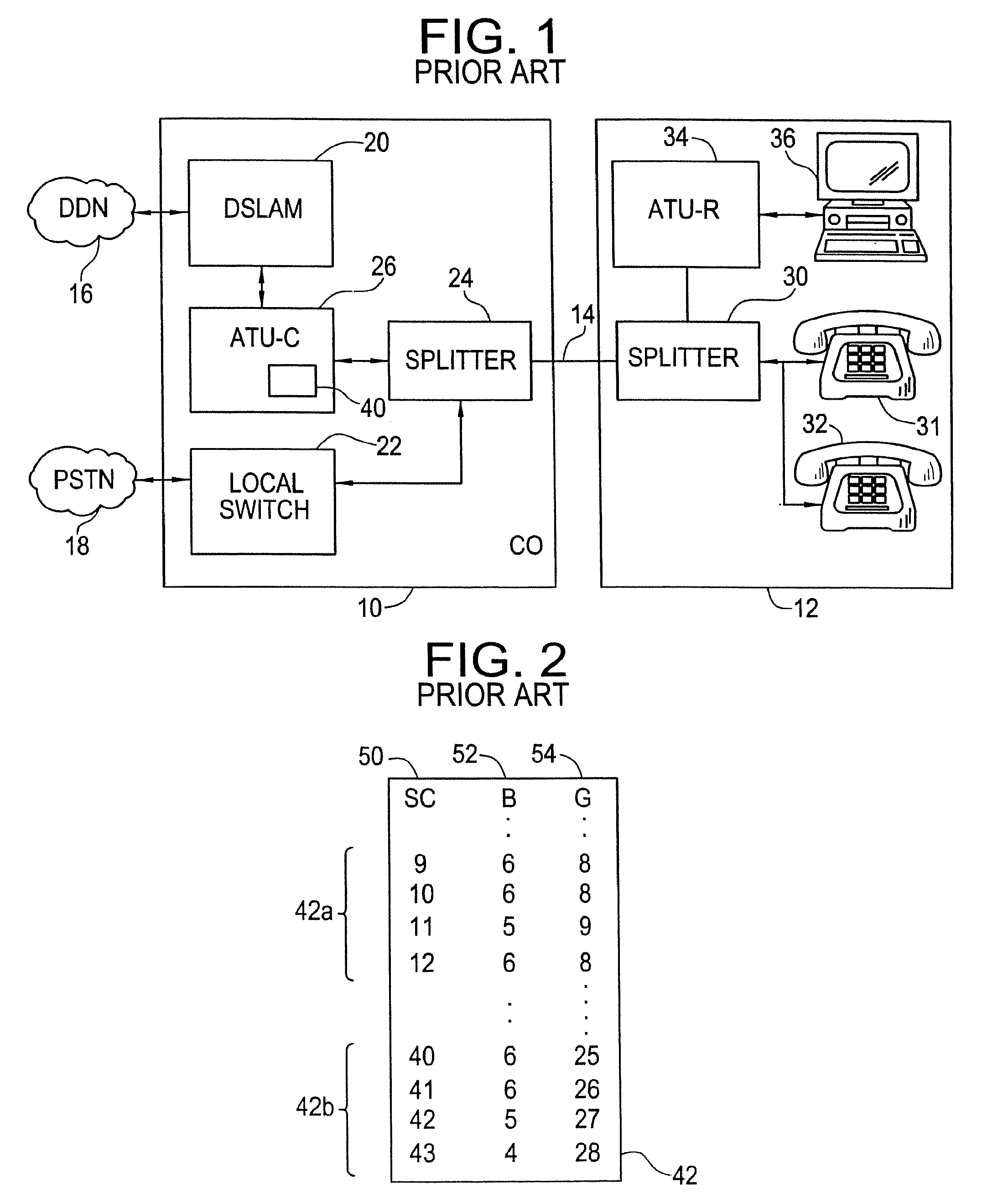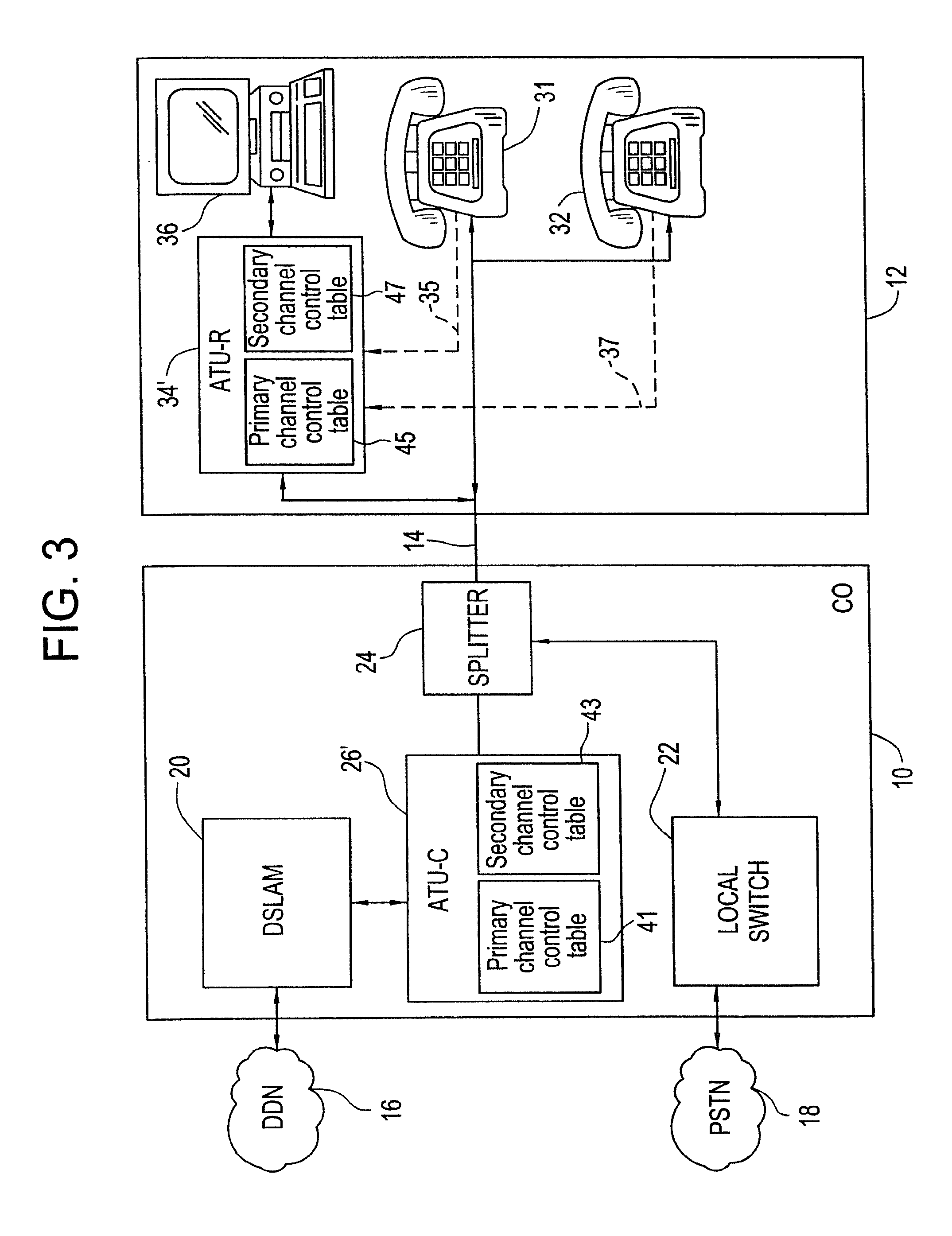Splitterless multicarrier modem
a multi-carrier modem and splitter technology, applied in data switching networks, frequency-division multiplexes, instruments, etc., can solve the problems of significantly changing channel characteristics and disrupting communications at a modem, so as to minimize interference with voice communications, reduce power levels, and enhance reliable communications
- Summary
- Abstract
- Description
- Claims
- Application Information
AI Technical Summary
Benefits of technology
Problems solved by technology
Method used
Image
Examples
Embodiment Construction
[0075]FIG. 1 shows an ADSL communications system of the type heretofore used incorporating “splitters” to separate voice and data communications transmitted over a telephone line. As there shown, a telephone central office (“CO”) 10 is connected to a remote subscriber 12 (“CP: Customer Premise”) by a subscriber line or loop 14. Typically, the subscriber line 14 comprises a pair of twisted copper wires; this has been the traditional medium for carrying voice communications between a telephone subscriber or customer and the central office. Designed to carry voice communications in a bandwidth of approximately 4 kHz (kilohertz), its use has been greatly extended by DSL technology.
[0076]The central office is, in turn, connected to a digital data network (“DDN”) 16 or sending and receiving digital data, as well as to a public switched telephone network (“PSTN”) 18 for sending and receiving voice and other low frequency communications. The digital data network is connected to the central ...
PUM
 Login to View More
Login to View More Abstract
Description
Claims
Application Information
 Login to View More
Login to View More - R&D
- Intellectual Property
- Life Sciences
- Materials
- Tech Scout
- Unparalleled Data Quality
- Higher Quality Content
- 60% Fewer Hallucinations
Browse by: Latest US Patents, China's latest patents, Technical Efficacy Thesaurus, Application Domain, Technology Topic, Popular Technical Reports.
© 2025 PatSnap. All rights reserved.Legal|Privacy policy|Modern Slavery Act Transparency Statement|Sitemap|About US| Contact US: help@patsnap.com



